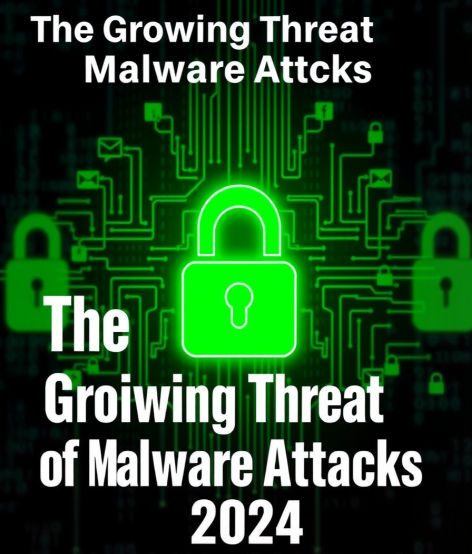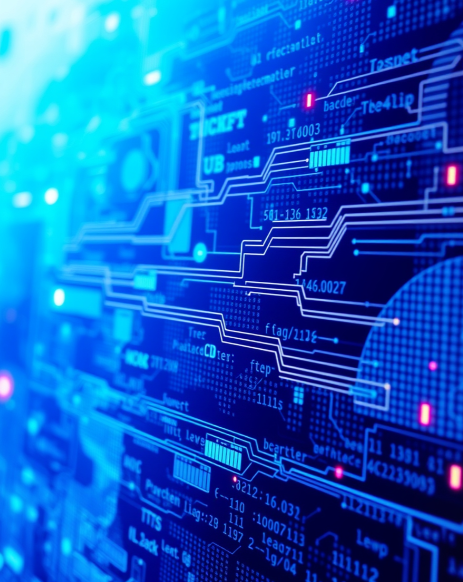
The Growing Threat of Malware Attacks
The Growing Threat of Malware Attacks: In today’s digital age, malware attacks have become a major concern for individuals and organizations alike. Malware, short for malicious software, is a type of software designed to harm or exploit a computer system or its user. With the increasing reliance on technology, malware attacks have become more sophisticated and frequent, making it essential to understand the risks and take necessary precautions to prevent them.
What is Malware?
Malware is a broad term that encompasses a range of malicious software, including viruses, worms, trojans, spyware, adware, and ransomware. Malware can be designed to steal sensitive information, disrupt system operations, or gain unauthorized access to a system. Malware can be spread through various means, including email attachments, infected software downloads, infected websites, and infected external devices.
How Malware Attacks are Attempted
Malware attacks can be launched in various ways, including:
- Phishing attacks: Malware can be spread through phishing emails that trick users into downloading infected attachments or clicking on malicious links.
- Drive-by downloads: Visiting an infected website can result in malware being downloaded onto a device without the user’s knowledge or consent.
- Infected software downloads: Downloading software from untrusted sources can result in malware being installed on a device.
- Infected external devices: Connecting an infected external device, such as a USB drive, to a computer can spread malware.
- Vulnerabilities in operating systems and software: Malware can exploit vulnerabilities in operating systems and software to gain access to a system.
How Malware Attacks Affect Phones and Computers
Malware attacks can have devastating consequences for both phones and computers. Some common effects of malware attacks include:
- Data theft: Malware can steal sensitive information, such as passwords, credit card numbers, and personal data.
- System crashes: Malware can cause system crashes, resulting in data loss and downtime.
- Ransomware attacks: Malware can encrypt files and demand payment in exchange for the decryption key.
- Identity theft: Malware can be used to steal personal information, leading to identity theft.
- Financial loss: Malware can be used to steal financial information, resulting in financial loss.
How to Prevent Malware Attacks
The Growing Threat of Malware Attacks: Preventing malware attacks requires a combination of awareness, education, and technical measures. Here are some tips to help you prevent malware attacks:
- Keep software up to date: Regularly update operating systems, browsers, and software to ensure you have the latest security patches.
- Use antivirus software: Install antivirus software to help detect and remove malware.
- Avoid suspicious emails and attachments: Be cautious when receiving unsolicited emails or attachments, and avoid clicking on links or downloading attachments from unknown sources.
- Use strong passwords: Use strong, unique passwords for all accounts, and avoid using the same password across multiple accounts.
- Use a firewall: Enable the firewall on your device to block unauthorized access.
- Use encryption: Use encryption to protect sensitive data, such as financial information and personal data.
- Back up data: Regularly back up data to prevent data loss in the event of a malware attack.
Conclusion
The Growing Threat of Malware Attacks: Malware attacks are a growing threat that requires attention and action from individuals and organizations alike. By understanding how malware attacks work and taking steps to prevent them, we can reduce the risk of falling victim to these attacks. Remember, malware attacks can have devastating consequences, including data theft, system crashes, and financial loss. By being proactive and taking necessary precautions, we can protect ourselves and our organizations from the growing threat of malware attacks.
In conclusion, malware attacks are a serious threat that requires a proactive approach to prevention. By educating ourselves, using technical measures, and being cautious when interacting with suspicious emails or attachments, we can reduce the risk of falling victim to malware attacks. Remember, cybersecurity is a shared responsibility, and it’s up to each of us to take action to protect ourselves and our organizations from the growing threat of malware attacks.
Please join us on LinkedIn for latest cybersecurity updates. You may write us at infosecitandot@gmail.com for suggestions and feedback.



